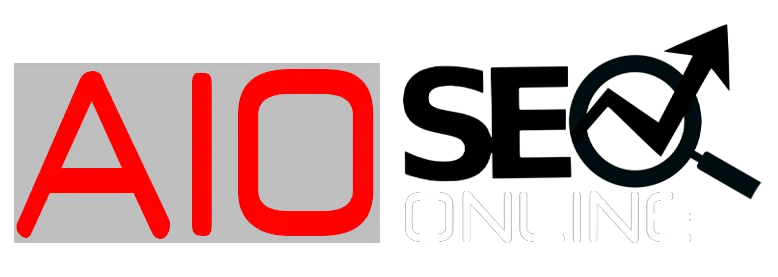Fix Invalid Traffic Sources: Fixing invalid traffic sources is critical for website owners aiming to protect ad revenue and maintain compliance with platforms like Google AdSense. Invalid traffic (IVT), such as bot-generated clicks or impressions, can lead to account suspensions, revenue clawbacks, or blacklisting by advertisers. In this guide outlines actionable steps to identify, mitigate, and prevent invalid traffic, ensuring your website thrives in 2025. Optimized for SEO, this article integrates semantic keywords, structured data, and practical tools to help you safeguard your site.
What Is Invalid Traffic?
Invalid traffic refers to clicks or impressions on ads that do not originate from genuine user interest. According to Google Ads Help, IVT includes accidental clicks, fraudulent bot activity, and deceptive practices like click farms. It can be categorized into:
- General Invalid Traffic (GIVT): Non-fraudulent but undesirable traffic, such as crawler bots or accidental clicks due to poor ad placement.
- Sophisticated Invalid Traffic (SIVT): Deliberate fraud, including botnets mimicking human behavior or incentivized clicks.
IVT impacts ad revenue by skewing analytics and reducing advertiser trust. A 2024 report by Lunio estimated $71.37 billion in ad spend was lost to IVT globally, highlighting its scale. Publishers must proactively address IVT to avoid penalties from platforms like Google AdSense or Amazon Associates.
Why Invalid Traffic Hurts Your Website
Invalid traffic undermines monetization efforts and site reputation. Key consequences include:
- Revenue Loss: Google deducts earnings from invalid clicks, crediting advertisers instead.
- Account Suspensions: Persistent IVT can lead to 30-day ad-serving limits or permanent account bans.
- Lower Advertiser Trust: High IVT prompts advertisers to reduce bids or blacklist sites, impacting revenue.
- Skewed Analytics: IVT distorts metrics like bounce rate and dwell time, complicating optimization efforts.
Using tools like AllinOneSEOOnline’s Google Analytics checker helps monitor traffic patterns and detect anomalies early.
Identifying Invalid Traffic Sources
Detecting IVT requires analyzing traffic patterns and sources. Below are key indicators and methods to identify problematic traffic.
High Bounce Rates
A bounce rate above 70% may signal bot activity, as bots typically leave after one page. Check bounce rates in Google Analytics 4 (GA4) by customizing the Events report. Cross-reference with traffic sources to pinpoint suspicious channels.
Low Dwell Time
Dwell time below 30 seconds, especially for paid traffic, suggests bots or uninterested users. Monitor dwell time in GA4’s Traffic Acquisition report to identify low-quality sources.
Sudden Traffic Spikes
Unexplained traffic surges without corresponding conversions indicate IVT. Set custom GA4 alerts to notify you of unusual activity. For example, a spike from an unfamiliar referrer could point to bot traffic.
Suspicious Referrers
Traffic from low-quality or unrelated sites often indicates IVT. Use GA4’s Acquisition > Referrals report to track referrer sources. Tools like AllinOneSEOOnline’s link analyzer tool help identify dubious backlinks.
| Indicator | What to Look For | Tool to Use |
|---|---|---|
| High Bounce Rate | Above 70% | Google Analytics Events Report |
| Low Dwell Time | Below 30 seconds | GA4 Traffic Acquisition Report |
| Traffic Spikes | Unexplained surges, no conversions | GA4 Custom Alerts |
| Suspicious Referrers | Traffic from unrelated/low-quality sites | AllinOneSEOOnline Link Analyzer |
Common Sources of Invalid Traffic
Understanding IVT sources is the first step to fixing them. Below are primary culprits and their risks.
Expired Domains
Purchasing expired domains for SEO benefits, like backlinks or authority, can introduce IVT. Redirected traffic may include bots or crawlers from the domain’s previous life, triggering AdSense warnings. Check server logs or AllinOneSEOOnline’s domain age checker to assess domain history before purchase.
Purchased Traffic
Buying traffic from low-quality providers, such as click farms, generates artificial clicks. These sources often use bots or incentivized humans, violating AdSense policies. Vet traffic providers using AllinOneSEOOnline’s suspicious domain checker.
Poor Ad Placement
Ads placed near navigation links or menus can cause accidental clicks, flagged as IVT. For example, ads below dropdowns may be mistaken for site content. Review placements with AllinOneSEOOnline’s page speed checker to ensure user-friendly layouts.
Bot Activity
Bots, including crawlers and malicious botnets, account for 27.7% of web traffic, per a 2021 Imperva report. Sophisticated bots mimic human behavior, making detection harder. Use tools like TrafficGuard to identify advanced bot activity.
Hacked Websites
Compromised sites may host scripts generating IVT, such as hidden ads or auto-clickers. Regular audits with AllinOneSEOOnline’s google malware checker can detect vulnerabilities.
Strategies to Fix Invalid Traffic Sources
Addressing IVT requires a multifaceted approach. Below are proven strategies to eliminate problematic traffic and maintain compliance.
Enable Bot Filtering in Google Analytics
Activate GA4’s bot filtering to exclude known bots and spiders from reports. Navigate to Admin > View > View Settings, check “Bot Filtering,” and save. This reduces GIVT visibility but doesn’t eliminate it entirely.
Use WordPress Plugins
For WordPress sites, plugins like Ad Invalid Click Protector (AICP) block IVT by limiting clicks per user, blocking IPs, or excluding countries. Install AICP via WordPress, configure settings to block excessive clicks, and monitor results. Combine with AllinOneSEOOnline’s broken links finder to ensure clean site navigation.
Leverage Cloudflare Security
Cloudflare’s Bot Fight Mode and firewall rules block suspicious traffic. Enable stricter security settings to filter bots, but avoid “Under Attack Mode” for regular use, as it may disrupt genuine users with interstitial checks. Verify settings with AllinOneSEOOnline’s server status checker.
Audit Traffic Sources
Regularly review GA4’s Acquisition report to identify low-quality referrers. Block suspicious IPs in Google Ads (Admin > Account Settings > IP Exclusions) or use Cloudflare to blacklist them. Tools like AllinOneSEOOnline’s reverse IP domain checker help trace traffic origins.
Optimize Ad Placements
Ensure ads are distinct from content and navigation. Avoid placing ads near menus or buttons to prevent accidental clicks. Use AllinOneSEOOnline’s code-to-text ratio checker to balance ad density and content quality.
Avoid Low-Quality Traffic Providers
Only purchase traffic from reputable sources. Avoid services promising cheap clicks, as they often rely on click farms or bots. Use AllinOneSEOOnline’s backlink checker to verify link quality before engaging providers.
Secure Your Website
Prevent hacks by changing default login URLs, using strong passwords, and installing security plugins like Wordfence. Regular scans with AllinOneSEOOnline’s google malware checker detect malicious scripts.
| Strategy | Action | Tool Recommended |
|---|---|---|
| Bot Filtering | Enable in GA4 Admin Settings | Google Analytics |
| WordPress Plugins | Install AICP, configure click limits | Ad Invalid Click Protector |
| Cloudflare Security | Enable Bot Fight Mode, set firewall rules | Cloudflare, AllinOneSEOOnline Server Checker |
| Traffic Audits | Review GA4 Acquisition report, block IPs | AllinOneSEOOnline Reverse IP Checker |
| Ad Placement Optimization | Separate ads from navigation | AllinOneSEOOnline Code-to-Text Checker |
| Avoid Low-Quality Traffic | Vet providers, avoid click farms | AllinOneSEOOnline Backlink Checker |
| Website Security | Change login URLs, scan for malware | AllinOneSEOOnline Google Malware Checker |
Preventing Invalid Traffic Proactively
Prevention is more effective than retroactive fixes. Implement these practices to minimize IVT risks.
Regular Site Audits
Conduct monthly audits to check for vulnerabilities, suspicious scripts, or traffic anomalies. Use AllinOneSEOOnline’s website screenshot generator to monitor site changes and find DNS records to verify domain settings.
Build Organic Traffic
Focus on SEO to attract genuine users. Optimize content with AllinOneSEOOnline’s keywords suggestion tool and meta tag generator to improve rankings. High-quality content reduces reliance on risky traffic sources.
Use Fraud Detection Tools
Tools like MonetizeMore’s Traffic Cop or Lunio detect and block IVT in real time. Traffic Cop, for instance, protects ad revenue by filtering bots and policy violations. Combine with AllinOneSEOOnline’s domain authority checker to monitor site credibility.
Monitor Backlinks
Spammy backlinks can drive IVT. Use Google’s Disavow Tool to remove harmful links, as suggested in posts on X. Regularly check backlinks with AllinOneSEOOnline’s backlink checker to ensure quality.
Educate Yourself on Ad Policies
Understand Google AdSense policies to avoid unintentional violations. For example, avoid incentivizing clicks or using deceptive ad formats. Review policies on Google’s Ad Traffic Quality page.
Handling AdSense Suspensions
If Google flags your site for IVT, act quickly:
- Analyze the Issue: Review Google’s notification email and GA4 data for traffic spikes or suspicious referrers.
- Remove Problematic Sources: Stop using low-quality traffic providers or fix ad placements.
- Submit an Appeal: Use Google’s Invalid Traffic Appeal Form, detailing corrective actions. Be professional and provide evidence, such as GA4 reports or IP blocks.
- Wait for Review: Suspensions typically last 30 days, with automatic reinstatement if no further issues occur.
For detailed guidance, refer to AllinOneSEOOnline’s blog on WordPress SEO.
Industry Trends in 2025
In 2025, AI-driven IVT detection is standard, with tools like TrafficGuard using machine learning to identify SIVT. Advertisers increasingly rely on Demand Side Platforms (DSPs) with advanced traffic quality metrics, making IVT prevention critical. WordPress sites benefit from plugins integrating real-time bot filtering, as noted in WPBeginner.
Additional Tips for Website Owners
- Optimize Site Speed: Slow sites may attract bots. Use AllinOneSEOOnline’s page speed checker to improve performance.
- Check Redirects: Monitor redirects with AllinOneSEOOnline’s www redirect checker to avoid IVT from expired domains.
- Stay Informed: Follow Ezoic’s blog for IVT updates and monetization strategies.
For broader monetization insights, explore AllinOneSEOOnline’s guide to earning as a Studypool tutor, which emphasizes clean traffic for educational platforms.

